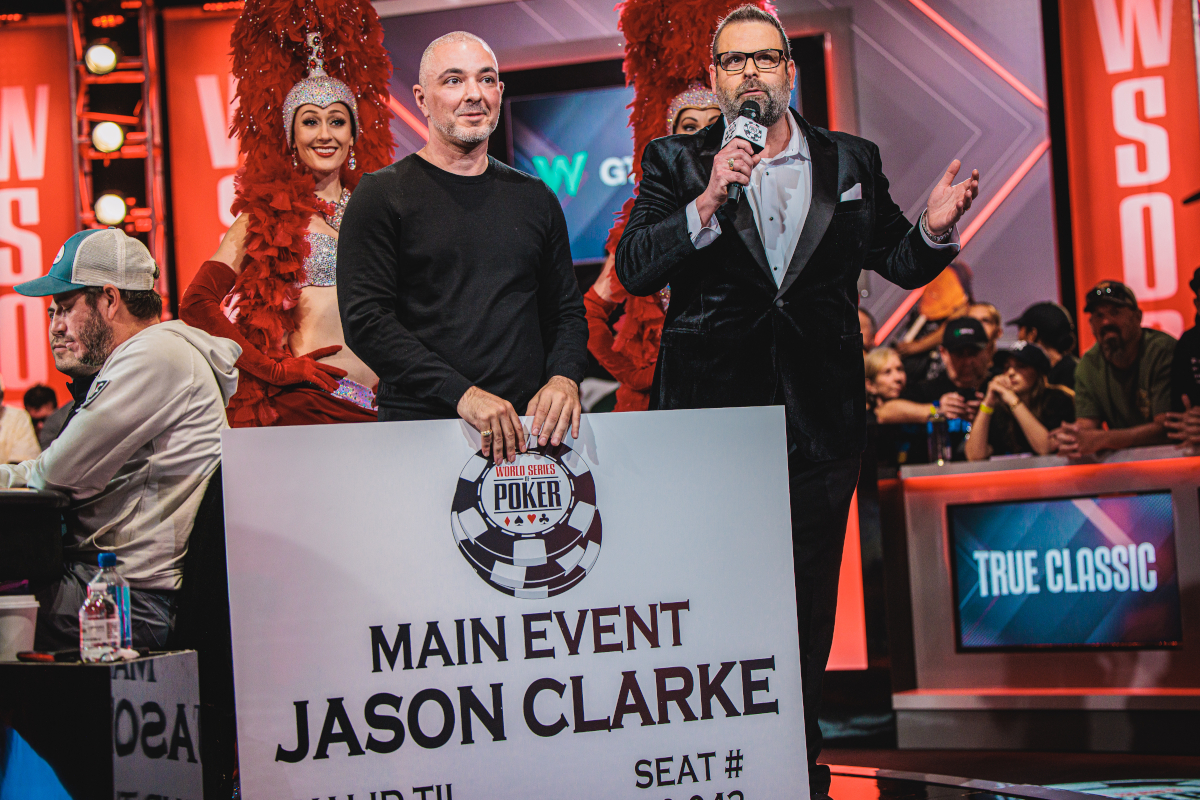
Jason Clarke Named First-Ever World Series of Poker ‘Main Event for Life’ Winner
Moments before cards hit the air for this year’s World Series of Poker (WSOP) Main Event Final Table, the WSOP officially named Jason Clarke as its first-ever ‘Main Event for Life’ winner. In honor of this year’s Main Event making history as the largest event field on record, the WSOP selected Clarke at random out of 10,043 entrants to win complimentary entry into the Main Event for the next 30 years.
“I actually missed the first phone call about me winning,” Clarke said. “Although I was skeptical, I decided to call back and to my surprise, I found out I won. I’m thrilled to have this opportunity and I am excited to see what the next 30 years has in store.”
About Jason Clarke
Born in North York, Canada, Clarke grew up in Brampton just outside of Toronto. While Clarke had always taken an interest in poker, playing casual games with childhood friends, he began to play professionally at the age of 25. Now, 17 years in and 15 WSOP tournaments later, he’s secured his spot in the Main Event for life.
On July 5, he won a $19,500 Daily Deep Stack tournament, which covered his $10,000 buy-in for what would be his first Main Event ever. Clarke busted in the Main Event before finishing in the money but plans on leveraging any winnings from his guaranteed seat over the next 30 years by donating 5% to various charitable initiatives.
When he’s not at the felt, Clarke spends his time as a real estate agent in Toronto and enjoys cheering on his favorite sports teams, the Buffalo Bills, Toronto Raptors and Maple Leafs. Fans are encouraged to keep up with Clarke as he embarks on his 30-year Main Event journey on Instagram (@jasonclarke2021).
With all eyes on the Final Table for this year’s Main Event, the WSOP will crown the 2023 World Champion on Monday, July 17. For real-time WSOP Main Event coverage, please visit PokerNews .com https: //bit .ly/3uLIQdj.










